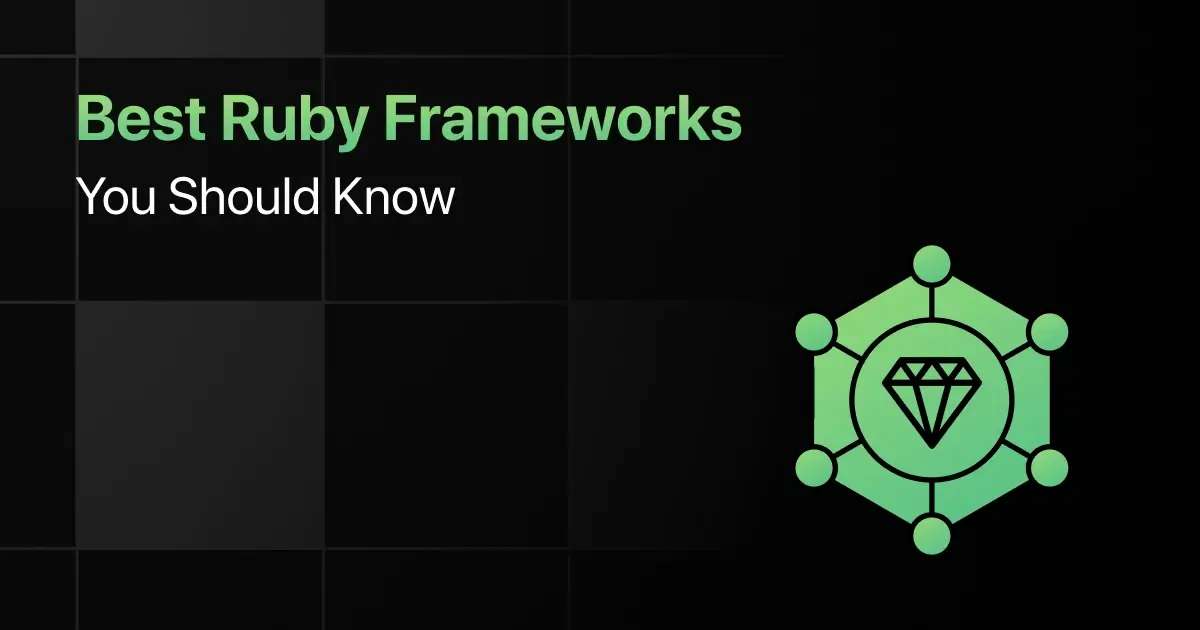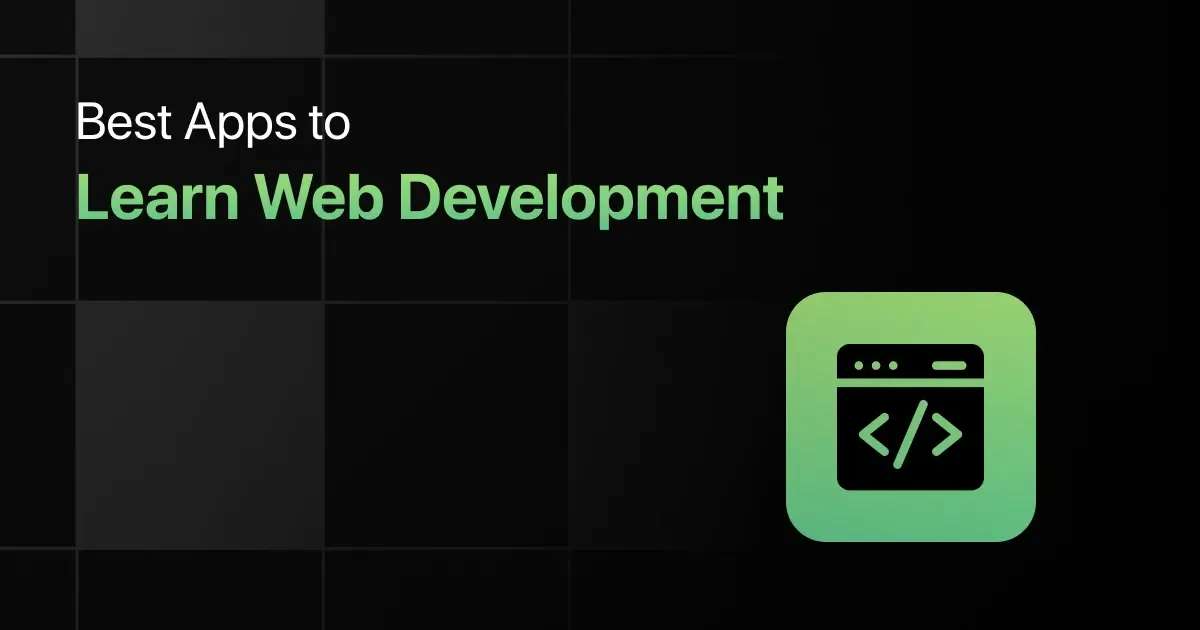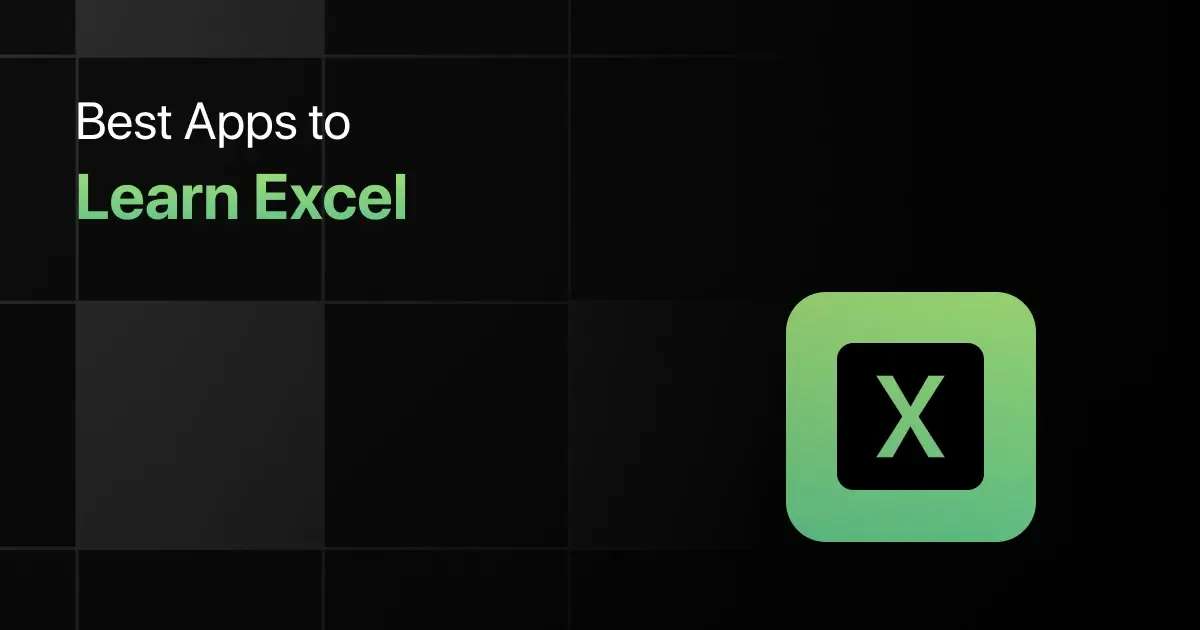Best Ruby Frameworks You Should Know

Ruby frameworks are essential tools for developers. They provide a structured foundation to build and manage web applications efficiently.
This blog will explore a Ruby framework list and highlight the unique features of the best Ruby frameworks and libraries.
If you’re looking for Ruby frameworks for beginners or aiming to conduct a Ruby frameworks comparison, this guide has you covered.
Top Ruby Frameworks for Developers – Overview
Here’s an overview of the top 8 Ruby frameworks:
| S.No. | Framework Name | Key Features | Ease of Integration | Download Link |
|---|---|---|---|---|
| 1 | Ruby on Rails | Convention Over Configuration, Active Record ORM | Easy | Download |
| 2 | Sinatra | Minimalistic and Flexible, Middleware Support | Easy | Download |
| 3 | Hanami | Modular Architecture, Lightweight and Fast | Medium | Download |
| 4 | Grape | RESTful API Design, Simple DSL | Easy | Download |
| 5 | Padrino | Rich Set of Helpers, Enhanced Routing | Medium | Download |
| 6 | Cuba | Minimalistic Design, Fast Performance | Easy | Download |
| 7 | Volt | Reactive Programming, Built-in Data Synchronization | Medium | Download |
| 8 | Scorched | Minimalistic Design, Flexible Routing | Easy | Download |
Most Popular Ruby Frameworks You Should Know
Below are the top 8 Ruby frameworks you should know:
1. Ruby on Rails
Ruby on Rails, often referred to as Rails, is a full-stack web application framework that uses the model-view-controller (MVC) pattern.
It emphasizes convention over configuration, making it easier to develop applications quickly.
Popularity:
- Widely adopted in web development.
- Preferred by startups and enterprises alike.
- Strong community support.
Key Features:
- Convention over configuration
- Active Record ORM
- RESTful application design
Learning Curve: Easy
Performance: Good performance for most web applications
Compatibility:
- Compatible with various databases like MySQL, PostgreSQL, and SQLite.
- Integrates well with front-end frameworks like React and Vue.js.
Ease of Integration: Easy
Use Cases and Industry Adoption:
- Web applications
- E-commerce platforms
- Content management systems
Job Market Demand:
- High demand in web development roles.
- Used by many startups and tech companies.
- Preferred for rapid development and scalability.
2. Sinatra
Sinatra is a DSL for quickly creating web applications in Ruby with minimal effort.
It’s designed for building lightweight and modular web applications.
Popularity:
- Popular for lightweight applications.
- Preferred for its simplicity.
- Strong community support.
Key Features:
- Minimalistic and flexible
- Middleware support
- Easy routing
Learning Curve: Easy
Performance: High performance for lightweight applications
Compatibility:
- Works well with various databases.
- Integrates with other Ruby libraries and tools.
Ease of Integration: Easy
Use Cases and Industry Adoption:
- Microservices
- Small web applications
- APIs
Job Market Demand:
- Moderate demand in web development.
- Used by startups and small projects.
- Preferred for quick and simple applications.
3. Hanami
Hanami is a modern web framework for Ruby, designed to be lightweight, fast, and secure.
It follows a modular architecture to keep the codebase clean and maintainable.
Popularity:
- Growing in popularity.
- Preferred for its modular design.
- Strong community support.
Key Features:
- Modular architecture
- Lightweight and fast
- Secure by default
Learning Curve: Medium
Performance: High performance with optimized design
Compatibility:
- Works with various databases.
- Integrates with other Ruby libraries.
Ease of Integration: Medium
Use Cases and Industry Adoption:
- Large-scale web applications
- Modular projects
- Secure applications
Job Market Demand:
- Increasing demand in Ruby development.
- Used by tech companies and startups.
- Preferred for maintainable and scalable projects.
4. Grape
Grape is a REST-like API framework for Ruby. It’s designed to run on Rack or complement existing web application frameworks like Rails and Sinatra by providing a simple DSL to create RESTful APIs easily.
Popularity:
- Popular for API development.
- Preferred for its simplicity.
- Strong community support.
Key Features:
- RESTful API design
- Simple DSL
- Middleware support
Learning Curve: Easy
Performance: Good performance for API development
Compatibility:
- Integrates with Rails, Sinatra, and other frameworks.
- Works well with various databases.
Ease of Integration: Easy
Use Cases and Industry Adoption:
- RESTful APIs
- Microservices
- Backend services
Job Market Demand:
- High demand for API development.
- Used by tech companies and startups.
- Preferred for its ease of use and flexibility.
5. Padrino
Padrino is a Ruby framework built upon the Sinatra web library. It provides many additional features and components that simplify the development of more complex web applications.
Popularity:
- Popular among Sinatra users.
- Preferred for its added features.
- Strong community support.
Key Features:
- Built on Sinatra
- Rich set of helpers
- Enhanced routing
Learning Curve: Medium
Performance: High performance with additional features
Compatibility:
- Works with various databases.
- Integrates with other Ruby libraries and tools.
Ease of Integration: Medium
Use Cases and Industry Adoption:
- Complex web applications
- Enhanced Sinatra projects
- Modular web applications
Job Market Demand:
- Moderate demand in Ruby development.
- Used by tech companies and startups.
- Preferred for complex Sinatra-based projects.
6. Cuba
Cuba is a microframework for web development in Ruby, inspired by Sinatra but even lighter.
It focuses on simplicity and performance.
Popularity:
- Popular for lightweight applications.
- Preferred for its minimalism.
- Strong community support.
Key Features:
- Minimalistic design
- Fast performance
- Simple routing
Learning Curve: Easy
Performance: High performance for lightweight applications
Compatibility:
- Works with various databases.
- Integrates with other Ruby libraries.
Ease of Integration: Easy
Use Cases and Industry Adoption:
- Microservices
- Small web applications
- APIs
Job Market Demand:
- Moderate demand in web development.
- Used by startups and small projects.
- Preferred for quick and simple applications.
7. Volt
Volt is a Ruby web framework where Ruby runs on both the server and the client.
It aims to make building reactive applications easier.
Popularity:
- Growing in popularity.
- Preferred for reactive applications.
- Strong community support.
Key Features:
- Reactive programming
- Ruby on the client and server
- Built-in data synchronization
Learning Curve: Medium
Performance: Good performance for reactive applications
Compatibility:
- Works with various databases.
- Integrates with other Ruby libraries.
Ease of Integration: Medium
Use Cases and Industry Adoption:
- Reactive web applications
- Real-time features
- Full-stack Ruby projects
Job Market Demand:
- Increasing demand for reactive applications.
- Used by tech startups.
- Preferred for full-stack Ruby development.
8. Scorched
Scorched is a lightweight and flexible web framework for Ruby, built on Rack.
It provides a minimalistic approach to building web applications.
Popularity:
- Popular for lightweight applications.
- Preferred for its simplicity.
- Strong community support.
Key Features:
- Minimalistic design
- Flexible routing
- Middleware support
Learning Curve: Easy
Performance: High performance for lightweight applications
Compatibility:
- Works with various databases.
- Integrates with other Ruby libraries.
Ease of Integration: Easy
Use Cases and Industry Adoption:
- Microservices
- Small web applications
- APIs
Job Market Demand:
- Moderate demand in web development.
- Used by startups and small projects.
- Preferred for quick and simple applications.
Frequently Asked Questions
1. What are the best Ruby frameworks to use?
The best Ruby frameworks to use are:
- Ruby on Rails
- Sinatra
- Hanami
- Grape
- Padrino
2. What key features should I look for in a Ruby framework?
The key features to look for in a Ruby framework are ease of use, scalability, flexibility, community support, and comprehensive documentation.
3. Which Ruby framework is best suited for web development?
Ruby on Rails is the best-suited Ruby framework for web development.
4. Which Ruby frameworks are easiest to learn for beginners?
Sinatra and Ruby on Rails are the easiest Ruby frameworks to learn for beginners.
5. What are the common use cases for different Ruby frameworks?
Common use cases include web applications (Ruby on Rails), lightweight web services (Sinatra), and API development (Grape).
6. What are some lightweight Ruby frameworks for rapid application development?
Some lightweight Ruby frameworks for rapid application development are Sinatra, Padrino, and Cuba.
7. Which Ruby frameworks are used by top companies?
Top companies use Ruby on Rails, Sinatra, and Hanami for their web development projects.
8. What is the job market demand for skills related to Ruby frameworks?
There is a high demand for skills related to Ruby on Rails and Sinatra in web development and tech companies.
Final Words
For beginners, starting with the recommended Ruby frameworks in this blog can ease the learning curve.
Mastering the top 8 Ruby frameworks will equip you with the knowledge and tools to build scalable web applications.
Explore More Ruby Resources
Explore More Frameworks
Related Posts


Best Apps to Learn Web Development
Ever thought about building your own website or launching a career in tech but don’t know where to start? With the …








